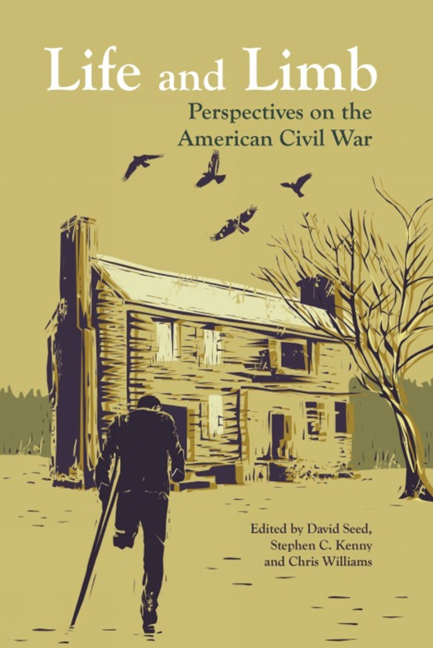Book contents
- Frontmatter
- Contents
- List of Illustrations
- Acknowledgements
- Introduction: Civil War Voices and Views
- MEDICAL AND SURGICAL MEMOIRS
- ACCOUNTS OF NURSING
- MEDICAL FACILITIES AND PATHOLOGY
- PHOTOGRAPHY
- AMPUTATIONS AND PROSTHETIC LIMBS
- IN THE FIELD OF BATTLE
- POST-WAR NARRATIVES
- ‘What I Saw of Shiloh’
- ‘The Coup de Grace’
- ‘A Resumed Identity’
- ‘Recollections of a Private’
- The Red Badge of Courage
- The Aftermath
- Contributors
- Select Bibliography
- Index
- Plates
‘The Coup de Grace’
from POST-WAR NARRATIVES
- Frontmatter
- Contents
- List of Illustrations
- Acknowledgements
- Introduction: Civil War Voices and Views
- MEDICAL AND SURGICAL MEMOIRS
- ACCOUNTS OF NURSING
- MEDICAL FACILITIES AND PATHOLOGY
- PHOTOGRAPHY
- AMPUTATIONS AND PROSTHETIC LIMBS
- IN THE FIELD OF BATTLE
- POST-WAR NARRATIVES
- ‘What I Saw of Shiloh’
- ‘The Coup de Grace’
- ‘A Resumed Identity’
- ‘Recollections of a Private’
- The Red Badge of Courage
- The Aftermath
- Contributors
- Select Bibliography
- Index
- Plates
Summary
The following text, also by Bierce, was published in the San Francisco Examiner, June 1889, and collected in Tales of Soldiers and Civilians (San Francisco: E.L.G. Steele, 1891), with the UK title In the Midst of Life.
The fighting had been hard and continuous; that was attested by all the senses. The very taste of battle was in the air. All was now over; it remained only to succor the wounded and bury the dead – to ‘tidy up a bit,’ as the humorist of a burial squad put it. A good deal of ‘tidying up’ was required. As far as one could see through the forests, among the splintered trees, lay wrecks of men and horses. Among them moved the stretcher-bearers, gathering and carrying away the few who showed signs of life. Most of the wounded had died of neglect while the right to minister to their wants was in dispute. It is an army regulation that the wounded must wait; the best way to care for them is to win the battle. It must be confessed that victory is a distinct advantage to a man requiring attention, but many do not live to avail themselves of it.
The dead were collected in groups of a dozen or a score and laid side by side in rows while the trenches were dug to receive them.
Some, found at too great a distance from these rallying points, were buried where they lay. There was little attempt at identification, though in most cases, the burial parties being detailed to glean the same ground which they had assisted to reap, the names of the victorious dead were known and listed. The enemy's fallen had to be content with counting. But of that they got enough: many of them were counted several times, and the total, as given afterward in the official report of the victorious commander, denoted rather a hope than a result.
At some little distance from the spot where one of the burial parties had established its ‘bivouac of the dead,’ a man in the uniform of a Federal officer stood leaning against a tree. From his feet upward to his neck his attitude was that of weariness reposing; but he turned his head uneasily from side to side; his mind was apparently not at rest.
- Type
- Chapter
- Information
- Life and LimbPerspectives on the American Civil War, pp. 169 - 174Publisher: Liverpool University PressPrint publication year: 2015

